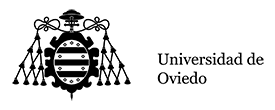Estudia
- Artes y humanidades
-
Ciencias
- Máster Erasmus Mundus en Recursos Biológicos Marinos
- Máster Universitario en Análisis de Datos para la Inteligencia de Negocios
- Máster Universitario en Biotecnología Alimentaria
- Máster Universitario en Biotecnología Aplicada a la Conservación y Gestión Sostenible de Recursos Vegetales
- Máster Universitario en Biotecnología del Medio Ambiente y la Salud
- Máster Universitario en Ciencias Analíticas y Bioanalíticas
- Máster Universitario en Conservación Marina
- Máster Universitario en Física Avanzada: Partículas, Astrofísica, Nanofísica y Materiales Cuánticos
- Máster Universitario en Modelización e Investigación Matemática, Estadística y Computación*
- Máster Universitario en Química Teórica y Modelización Computacional
- Máster Universitario en Química y Desarrollo Sostenible
- Máster Universitario en Recursos Geológicos e Ingeniería Geológica
- Ciencias de la salud
- Ciencias sociales y jurídicas
- Ingeniería y arquitectura
- Información, acceso y becas
Introducción a los Nanomateriales y a su Caracterización
- Prácticas de Laboratorio (3 Hours)
- Tutorías Grupales (2 Hours)
- Clases Expositivas (15.5 Hours)
- Prácticas de Aula/Semina (2 Hours)
The course "Introduction to Nanomaterials and their characterization" is in the block of the optional subjects of module 2 at the program of the master. Its main objective is the introduction to students in one of the major fields of scientific research of great innovation and extraordinary potential: the nanotechnology.
Thus, after a necessary introduction to the field of nanoscience and nanotechnology, and to the most representative materials employed in these areas, this course addresses the study of fundamental concepts related to the analysis of nanomaterials. A wide variety of applications of nanomaterials in many different fields from science and technology (biomedicine, environment, biochemistry, food, biotechnology, etc.) will be also revised.
The course stars with the main concepts of nanotechnology: the particular features of the phenomena at nanometer scale and their impact on the macroscopic properties of a material. It covers also the main types of nanomaterials, the synthesis and characterization techniques, and the most important analytical applications.
The subject is closely interrelated with the other optional subjects of module 2. For example, it has a very close relationship with subjects such as qualitative and quantitative proteomics and biomarker analysis, techniques of bioconjugation for the application of nanomaterials in bionalysis, miniaturization and automation in analysis, forensic analysis, or the environmental analysis.
The course is also related to the rest of the subjects of the master curriculum, devoted to techniques and/or analysis tools (included in module 1), for characterization of nanomaterials. In addition, some of the practices included within the subject "Experimental introduction to the analytical techniques in routine and research laboratories" (module 3) will address the use of nanomaterials in biochemical analysis.
Finally it is important to mention that this course ensures a fundamental training for those students that are considering a doctoral thesis in the University, CSIC or in a Technology Center, and for those people interested on a research possition in private of public laboratories in the field of nanoscience and nanotechnologies.
Considering that teaching is going to be taught in English, the order ECI 3858/2007 in section 4.2 of the annex provides that "students should have to demonstrate an English level equivalent to the level B1 of the common European reference for languages, in accordance with the recommendation No. R (98) 6 of the Committee of Ministers of Member States of 17 October 2000".
On the other hand, the subject does not have any additional administrative prerequisite to those needed to accede to the masters. It is recommended to possess basic knowledge in chemistry, as well as a basic operation of the information and communication technologies.
The overall objective of this area is to provide a general insight into the topic of analytical nanoscience and nanotechnology. The course focusses on the nanomaterials most commonly used today in bioanalysis, some more relevant applications and the analytical tools available for its chemical characterization.
It is intended that the student understands the enormous potential that this type of new materials has, both at the present time as to future developments.
At the end of this course, the students should have, at least, some skills related to the knowledge of the influence of the structure and morphology to Nano-scale in the macroscopic properties of a material, involving the following specific objectives (that can be found in the VERIFICA document of the Master):
CE-1; CE-2; CE-5 and CE-7.
Moreover, general competencies related to the analysis and research uses on nanomaterials (that can be found in the VERIFICA document of the Master) to be developed are:
CG1, CG2, CG5, CG7 and CG8.
These skills, both General and Specific, are specified in the following learning outcomes (Basic Objectives that can be found in the VERIFICA document of the Master):
CB6, CB7, CB9 and CB10
The contents of the subject will be grouped in the following topics:
Unit 1. Introduction to nanoscience and nanotechnology. Basic concepts. Size-dependent properties. Classification and manufacturing strategies. Manufacturing methods: "top-down" and "botton-up techniques. The stabilization of colloidal suspensions.
Unit 2. Carbon-based Nanomaterials. Carbon nanotubes. Structure, properties and chemistry of carbon nanotubes. Synthesis. Functionalisation. Fullerenes and graphene. Applications of carbon nanomaterials in Analytical Chemistry.
Unit 3. Metal nanoparticles. Nanoparticles of gold. Silver nanoparticles. Quantum dots. Optical, conductive, magnetic, catalytic properties. Relevant applications.
Unit 4. BioMimetic nanomaterials. Monolayers. Nanocapsules. Nanozymes. Metallorganic frameworks.
Unit 5. Techniques of structural characterization of nanomaterials. Probe Microscopies: atomic force, tunnel and chemical strength. Control of the size of nanoparticles in dissolution and aerosols. Field Flow Fractionation techniques. Dynamic light scattering. Single particle ICP-MS.
Unit 6. Toxicity and Environmental issues of NPs.Guidelines for evaluation of cellular toxicity of NPs.
The course will be developed through:
1. Lectures: oral presentations with participation of the students. Computer presentations and slate will be used as teaching resources. It will provide material support incorporated into the Virtual Campus platform.
2. Practices: there will be a session of 3 hours in duration in which students will carry out a synthesis of gold nanoparticles (in different conditions) and their characterization.
3. Classes of problems and seminars (practices/seminars): The specific application of the knowledge that students have acquired in the lectures will take place in these sessions. Students shall be provided in advance with the issues or problems that they are going to be resolved, and must work in them previously to proceed during the sessions to the analysis and discussion of such questions/problems, individually and collectively.
4. Group mentoring: a group mentoring will be held at the end of the exhibition sessions corresponding to items 1 to 3 which are synthesized the principal characteristics of the different groups of nanomaterials presented to date, discussing the doubts and questions that may arise. In addition students will assess critically the trends of development of the different types of nanomaterials described, through the review of case studies published in international scientific journals and news in this field of research. Once finished the exhibition classes of the last item there will be a second group tutoring are aimed at students to evaluate the analytical techniques used in the development of nanoscience and nanotechnology.
The following table summarizes generally the work plan to be followed in the development of the subject:
ATTENDANCE WORK | NON ATTENDANCE WORK | |||||||||||
Units | Total hours | Lectures | Practices / Seminars | Lab and field practices | Practices in the hospital | Group mentoring | External practices | Evaluation | Total | Group work | Personal work | Total |
Unit 1 | 7 | 2 | 2 | 6 | 6 | |||||||
Unit 2 | 10 | 2 | 1 | 3 | 2 | 6 | 8 | |||||
Unit 3 | 16 | 2 | 1 | 3 | 2 | 5,5 | 7,5 | |||||
Unit 4 | 7 | 4 | 4 | 6,5 | 6,5 | |||||||
Unit 5 | 16 | 3 | 1 | 3 | 7 | 8 | 5,5 | 13,5 | ||||
Unit 6 | 19 | 1 | 1 | 1,5 | 3,5 | 2 | 9 | 11 | ||||
Total | 75 | 14 | 2 | 3 | 2 | 1,5 | 22,5 | 14 | 38,5 | 52,5 | ||
TYPE | Hours | % | Totals | |
Attendance class | Lectures | 14 | 18,7 | 22,5 |
Practices /Seminars | 2 | 2,7 | ||
Lab and field practices | 3 | 4 | ||
Practices in the hospital | ||||
Group mentoring | 2 | 2,7 | ||
External practices | ||||
Evaluation | 1,5 | 2 | ||
Non-attendance activity | Group work | 14 | 18,6 | 52,5 |
Personal work | 38,5 | 51,3 | ||
Total | 75 | 100 | ||
Activity | Evaluation criteria | Instrument | Weight (%) | |
Exam |
| Written Test | 75 | |
Group mentoring |
| In each session each student will deliver resolved a number of issues previously proposed and which will be the subject of evaluation. | 15 | |
Lab practices | The demonstrated interest on the experiments carried out during the lab procedures will be evaluated | Questionnaire on issues discussed during the lab practice | 10 |
The evaluation in the extraordinary calls will be made through the accomplishment of a written test (examination) whose result will constitute the 100% of the qualification of the subjet.
In the Virtual Campus of the course the student will have materials developed by the educational team and, in each case, the necessary information and documentation for the study of the different themes in which the subject is divided will be given.
Some recommended reference texts are detailed below.
1. Nanomaterials Handbook.
Y. Gogotsi; Ed. TaylorFrancis, CRC. 2006. Boca Ratón. Florida. USA.
2. Nanochemistry. A Chemical approach to nanomaterials.
G.A. Ozín, A.C. Arsenault RSC Publishing; 2006
3. Nanofluids. Science and Technology
S.K.Das, S.U.S. Choi, W.Yu, T. Pradeep; Wiley Interscience, 2008; New Jersey, USA
4. Handbook of Nanotecnology
B. Brushan; Springer-Verlag 2004
5. Nanotechnology. An introduction to Nanostructuring Techniques.
M. Kohler, W- Fritzsche; Wiley 2004.

